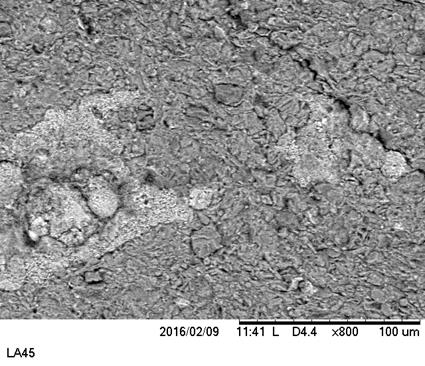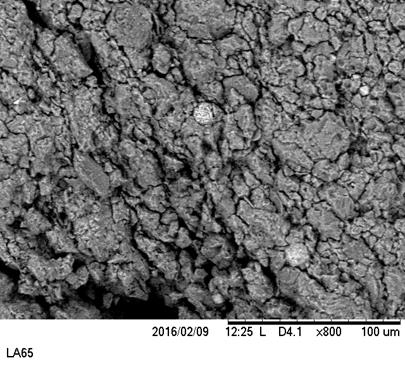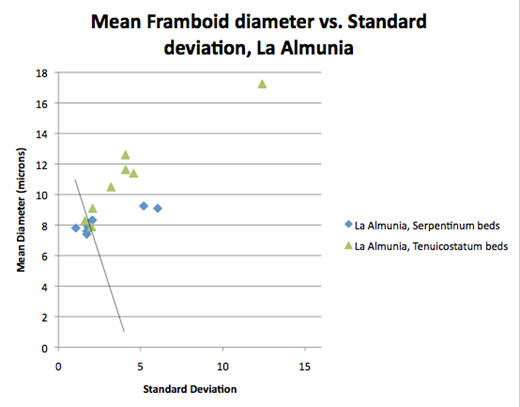Reports: ND854675-ND8: Oceanographic Causes of Anoxia and Organic-Matter Accumulation: Testing Models in the Toarcian Ocean Anoxic Event
Matthew E. Clapham, PhD, University of California, Santa Cruz
Research progress
Our main objective is to use seasonally-resolved stable isotope data collected at high resolution from fossil bivalve shells to reconstruct oceanographic conditions during the Toarcian ocean anoxic event (T-OAE). The bulk of the effort this year has focused on collecting those oxygen and carbon isotopes, although in reality we have spent most of the time assessing diagenesis. Initially we used cathodoluminescence (CL) to screen for alteration, as has previously been done for isotopes from fossil belemnites at these locations. However, this approach appears to be reliable only some of the time, as we have discovered that some of the alteration has deposited iron-rich cements in the sediment and shells. Typically diagenetically altered material will glow under CL, but iron quenches that signal. We have been reassessing our previous isotopic data (whether seasonal signals are present in the time series) and have been forced to supplement our diagenesis screening with more time-consuming trace metal analyses. Our analyses are still in progress, but it appears that previous belemnite-based records may not accurately capture paleoenvironmental changes at this site.
We have also reconstructed local redox conditions at both sections using pyrite framboid diameters (Fig. 1). Pyrite framboids that form within an anoxic water column sink rapidly as they grow, so will be smaller and have a narrow size range than framboids or crystalline pyrite that grow within the sediment. Our study sections lack the black shales typical of the T-OAE in northwest Europe, so previous studies have not assessed redox conditions. However, the pyrite size data (Fig. 2) suggest that bottom-water oxygen levels were reduced in beds correlative with the T-OAE (Serpentinum zone bed) compared to older units from the Tenuicostatum zone. Conditions in the Spanish sections were not fully anoxic, but the frequency of suboxic intervals likely increased in the Serpentinum zone.
Fig. 1. Pyrite framboids from La Almunia section. Left: From sample LA45 in the Tenuicostatum zone, prior to the Toarcian anoxic event. Right: From sample LA65 in the Serpentinum zone, during to the Toarcian anoxic event (as developed in northwest Europe).
Fig. 2. Pyrite framboid diameters (mean and standard deviation) from La Almunia.
Impact on personnel
Two graduate students were supported by these funds over the past year. Marko Manojlovic completed his MS thesis and received summer support in 2016 (part of which falls within the reporting period). Dan Killam continues to work on his PhD, with an anticipated completion of spring or summer 2018 (to be determined once he lines up a postdoctoral opportunity). The PRF funds have been indispensable in giving Dan release from TA duties. He’s been able to take on more leadership roles over the past year, including as graduate student representative to our department, as a mentor in the Cultivamos Excelencia program aimed at facilitating transfer students from community college, and as one of the leaders of the GEODES organization aimed at discussing diversity and inclusion issues.














